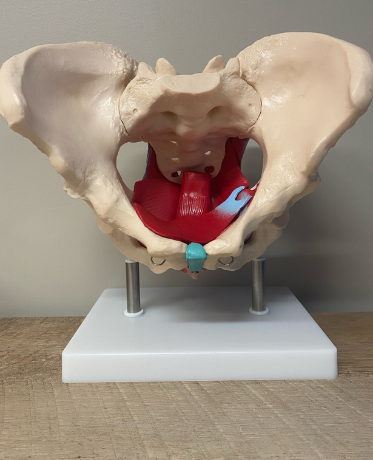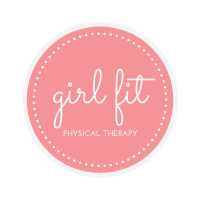


Returning to postpartum exercise is both a physical and emotional challenge for many new moms. While there is societal pressure to “bounce back” as quickly as possible, this is not realistic or safe. Physical therapists across the country are taking a stand against this notion and spreading the word about the “4th trimester”, which is defined as the 3 months following birth. Regardless of your birthing experience, during the 4th trimester (and long after) your body is healing from the incredible journey of carrying and birthing a baby. During this challenging time, it is important to prioritize rest and recovery as much as possible, while laying the groundwork for an eventual return to your previous level of exercise. Below I describe ways to begin to safely get moving again. However, the biggest piece of advice I would give any new mom is to see a pelvic health physical therapist or a PT who has experience treating postpartum women EVEN IF you are not experiencing any pain!!

While pregnant, breathing tends to become shallow as your baby takes up more and more space in your abdominal cavity. After birth, that altered breathing pattern often persists. One of the first things to start working on is returning to a diaphragmatic breathing pattern which helps increase oxygenation, decrease stress levels, decrease neck strain, reconnect the diaphragm to pelvic floor function, and engage the abdominals.
On an inhale, practice visualizing your breath entering your body and moving downward. Try to avoid letting your shoulders hike up to your ears. While sitting or lying down you can place your hands around the bottom of the rib cage and see if you can feel your lower ribs move/expand in 360 degrees (to the front, sides, and back of your body).

The added weight of carrying your baby during pregnancy places an enormous demand on your pelvic floor muscles. Follow that up with the strain and stretching that accompanies a vaginal birth and it’s easy to understand why this area needs attention postpartum. Prior to pregnancy your pelvic floor muscles were working to hold up your internal organs and provide you with continence (the ability to hold in urine and feces). The added stress, and often injury, to the pelvic floor during pregnancy and labor can cause weakness, tightness, lack of coordination, and diminished strength in these muscles. This can in turn lead to leaking urine/feces (incontinence), pelvic organ prolapse, and/or pain.
Start reconnecting your brain to your pelvic floor muscles by visualizing yourself sitting on a bean and trying to gently lift that bean up inside your vaginal opening. Another helpful visual is to imagine you are sucking a thick milkshake up through a straw in your vagina (to be clear though, don’t actually place a bean or straw down there!). Try to notice if you can feel a slight contraction or lifting sensation at the bottom of your pelvis when you attempt this. Also, it is very important to make sure you fully relax the pelvic floor muscles between each attempted contraction.

The transverse abdominus is a muscle that wraps around your waist like a corset and provides spinal stability. The transverse abdominus is an important muscle to be able to engage as you prepare to return to postpartum exercise. As you can imagine, this muscle gets very stretched out during pregnancy which makes it much harder to contract postpartum. Not being able to utilize this muscle often causes over reliance on the rectus abdominus (the “six-pack muscle”) and can cause back pain, worsen or prolong diastasis rectus, and increase pressure down on the pelvic floor which can lead to leaking.
Start trying to engage your transverse abdominus by exhaling and pulling your stomach back towards your spine. This is a gentle contraction without a lot of other motion, it is not a crunch or tuck of your spine or pelvis. Try not to just suck your stomach in like you would with a sharp inhale. Think about contracting the muscles along the sides and front of your stomach, especially down at your lower belly with your exhale. If this seems too difficult at first, just practice giving a strong exhale right before you stand up from sitting, or before lifting your baby (or anything moderately heavy). This promotes pelvic floor and transverse abdominus activation and supports your spine and internal organs.
Being pregnant and then caring for your newborn often puts you in altered, and even awkward, positions for prolonged periods of time. Trying to maintain decent posture is important but can seem like a losing battle initially. Spending time doing mobility work can make a huge difference in your level of comfort and is important to address before you start trying to exercise. Adding weights on top of poor movement patterns is a recipe for injury.
Spend just a few minutes each day giving your body some TLC in the form of foam rolling, stretching, or using a lacrosse ball for self-massage and tissue release. Through the first month or two of my maternity leave I tried to give myself 5 minutes before going to bed each night to move and stretch. Even though mentally I wanted to be able to be working out hard already, physically I was too tired and nowhere near strong enough to work out the way I could pre-pregnancy yet. I was amazed at how fantastic it felt to spend time on my mobility. Some of my personal favorites included: cat/cow, child’s pose with side bending, thoracic spine rotation, chest stretching over the foam roller, upper back extension over the foam roller, hip flexor stretching, and using a lacrosse ball against a wall to massage my upper back and my glutes. Not sure what some of these are? Yet another great reason to schedule an evaluation at Girl Fit Physical Therapy to get yourself a personalized mobility plan!

For many women it can be tempting to jump right back into exercise after having a baby, especially if they were active throughout their pregnancy. It is important to remember how much your body has changed now that you have given birth to your precious baby though. Spending time slowly working back to your pre-baby exercise level is vital. Rushing back to heavy weight lifting or running can set you up for injury. Working with a physical therapist after having a baby can help guide you along your road to return to exercise. Having external feedback will ensure that you can breathe well, engage muscles correctly, move through your full range of motion, activate your core and pelvic floor fully, and meet important strength criteria before performing higher level exercise. This can keep you safe and will get you back to exercising more consistently with less risk of injury.

You don’t have to do it alone or guess at the next steps to take. The Girl Fit team is here for you! Remember, you do not need to be in pain to justify needing physical therapy after having a baby. If your OBGYN doesn’t recommend postpartum PT at your 6 week follow up, just ask for a prescription and come see us!
To schedule a postpartum physical therapy evaluation, just email us at office@girlfitPT.com or give us a call at 617-618-9290.
To learn more about postpartum and pelvic physical therapy, check out our blogs on pelvic physical therapy, postpartum physical therapy, pelvic pain, and urinary incontinence in high impact sports.
Christina Verhorevoort, PT, DPT
Clinical Strength & Conditioning Specialist
Follow us on Instagram @girlfitrocks


